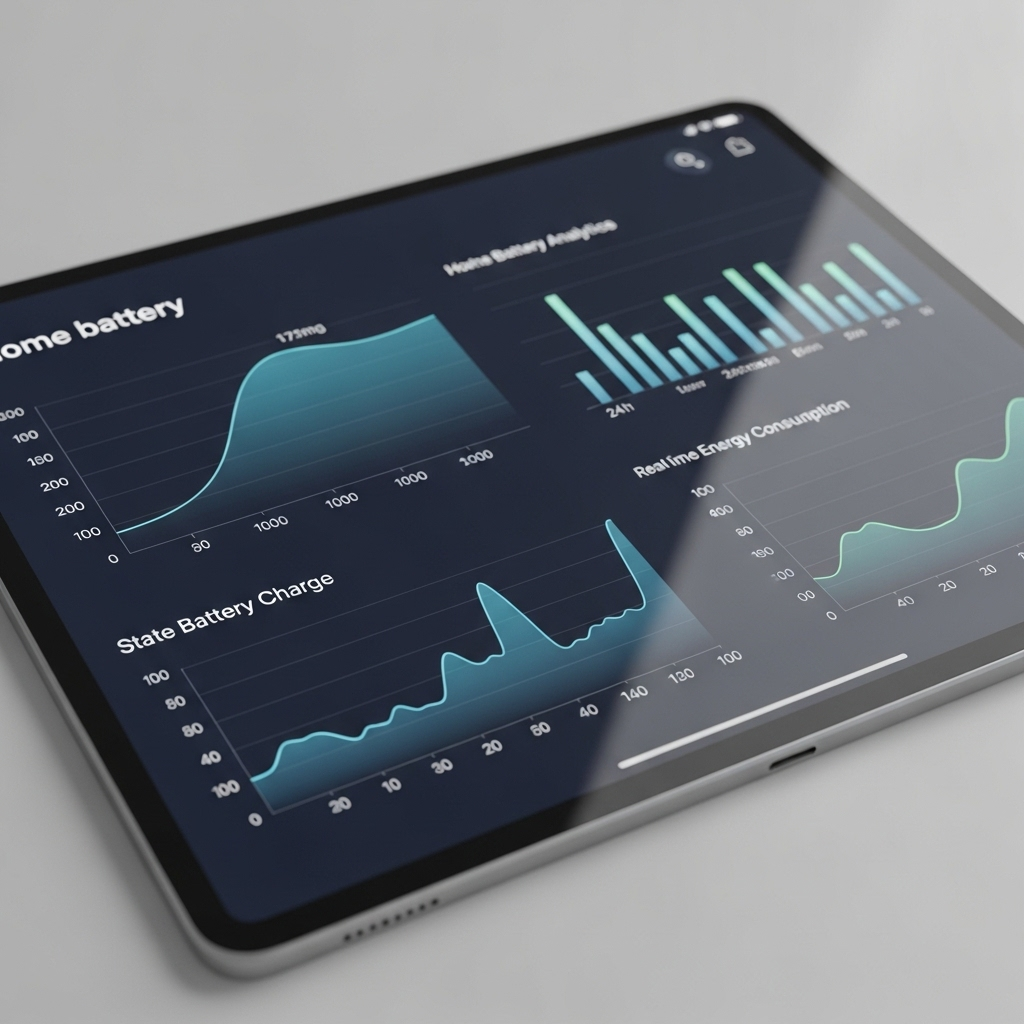A common question from users of energy storage systems revolves around charging habits. Many people believe that batteries must always be fully charged and discharged, a holdover from older technologies. This leads to a critical question: does frequent partial charging have a negative effect on Lithium Iron Phosphate (LiFePO4) batteries? The short answer is no. In fact, it can be highly beneficial.
Understanding LiFePO4 Chemistry and Charging Myths
To appreciate why partial charging is advantageous for LiFePO4 batteries, it helps to look at the science behind them and contrast it with outdated battery concepts.
The Ghost of 'Memory Effect'
The 'memory effect' is a phenomenon where a battery loses usable capacity if it is repeatedly recharged before being fully depleted. This issue was prominent in older nickel-cadmium (Ni-Cd) and, to a lesser extent, nickel-metal hydride (Ni-MH) batteries. If you only used 30% of the battery's capacity before recharging, it would 'remember' this and eventually refuse to deliver energy beyond that point. LiFePO4 chemistry does not suffer from this memory effect, making its charging patterns far more flexible.
What Happens Inside a LiFePO4 Cell During a Partial Charge?
LiFePO4 batteries feature a remarkably stable crystalline structure. During charging and discharging, lithium ions move between the cathode and anode. In a LiFePO4 cell, this process causes minimal physical stress on the electrode materials. Because the structure is not prone to degradation from incomplete cycles, frequent partial charging does not cause harm. The battery can operate efficiently regardless of whether it starts charging at 20%, 40%, or 70% state of charge.
Why Full Charges Can Be More Stressful
Consistently pushing a battery to its absolute limits—100% charge or 0% discharge—imposes more stress on its components. Holding a LiFePO4 battery at a 100% state of charge for extended periods can accelerate calendar aging. Research from the International Renewable Energy Agency (IRENA) in its Innovation Outlook: Smart charging for electric vehicles notes that to maintain chemical stability in lithium-ion chemistries for long-term use, keeping them partially charged is preferable to a full charge.
The Positive Impact of Partial Charging on Battery Lifespan
Instead of being harmful, adopting a partial charging strategy is one of the most effective ways to extend the operational life of your LiFePO4 battery. This approach maximizes your investment and ensures reliable performance for years.
Cycle Life: The Core Benefit
A battery's cycle life is the number of full charge and discharge cycles it can endure before its capacity drops to a certain percentage of its initial rating. For LiFePO4 batteries, there is a direct relationship between the Depth of Discharge (DoD) and the total number of cycles. A shallower discharge, which is a key component of a partial charging routine, results in a dramatically higher cycle count.
| Depth of Discharge (DoD) | Estimated Cycle Life |
|---|---|
| 100% | 3,000+ |
| 80% | 5,000+ |
| 50% | 8,000+ |
| 30% | 12,000+ |
As the table shows, limiting the DoD to 50% can nearly triple the battery's expected lifespan compared to cycling it fully every time.
Reducing Stress on Battery Components
Operating a battery within a moderate state of charge window (e.g., 20% to 80%) minimizes stress. It reduces the strain on the electrodes and electrolyte that occurs at very high or very low charge levels. This practice also tends to generate less heat, another factor that contributes to battery degradation over time.
Practical Application in Solar Energy Systems
Solar energy systems are a perfect example of where partial charging shines. Solar production is inherently variable due to weather, clouds, and the time of day. A solar battery will naturally experience many partial charge cycles as it absorbs available energy and services household loads. The resilience of LiFePO4 to this charging pattern is a key reason it has become the standard for modern energy storage. The growth of solar PV, as highlighted in reports like the Energy Technology Perspectives 2024 by the IEA, relies heavily on the durability of storage technologies like LiFePO4.
Best Practices for Charging Your LiFePO4 Battery
To leverage the benefits of partial charging, you can implement a few simple strategies. These practices are easy to set up and will protect your energy storage system.
The Role of the Battery Management System (BMS)
A high-quality Battery Management System (BMS) is the brain of your battery pack. It automatically protects the cells from over-voltage, under-voltage, extreme temperatures, and short circuits. The BMS ensures that even within a partial charging strategy, all cells remain balanced and healthy, preventing any single cell from being overstressed.
Finding the Sweet Spot: Optimal SoC Windows
For daily use, operating your battery within a State of Charge (SoC) window of 20% to 80% is a widely recommended practice. This approach provides ample usable energy while dramatically extending cycle life. You can adjust this window based on your needs; for example, you might set a higher minimum SoC if you need to reserve power for potential grid outages.
The Occasional Full Charge for Calibration
While daily full charges are not recommended, performing a 100% charge periodically is a good maintenance practice. A full charge cycle every one to three months allows the BMS to accurately recalibrate its SoC estimation and balance the voltage across all cells. Think of it as a tune-up, not a daily requirement.
Integrating Partial Charging with Your System
Modern solar and energy storage components make it simple to implement an intelligent charging strategy.
Configuring Your Inverter and Charge Controller
Most modern solar inverters and charge controllers allow you to define specific voltage or SoC setpoints. By configuring these settings, you can automate a partial charging strategy. For example, you can set your inverter to stop charging the battery from the grid at 80% and stop discharging it at 20%. This makes the entire process seamless and consistent.
Data-Driven Performance Insights
Understanding how your system performs is key to optimization. For a deeper look at how different settings affect long-term performance, comprehensive data on solar storage metrics can provide valuable insights. For instance, the analysis in the Ultimate Reference for Solar Storage Performance shows a clear correlation between operating parameters and battery longevity. Tracking your system's data helps you confirm that your charging strategy is delivering the intended benefits.
A New Perspective on Battery Health
The idea that frequent partial charges are harmful is a myth rooted in obsolete technology. For LiFePO4 batteries, the opposite is true. This chemistry thrives on partial cycles, making it exceptionally durable and perfectly suited for applications like solar energy storage where power flow is constantly changing. According to the International Energy Agency's Technology Roadmap for Solar Photovoltaic Energy, the synergy between PV generation and distributed storage is critical for future energy systems. Embracing a partial charging strategy is a simple and effective way to maximize the lifespan and value of your LiFePO4 battery, ensuring it provides clean, reliable power for a very long time.
Frequently Asked Questions
Do I need to fully charge my new LiFePO4 battery before first use?
No, it is not strictly necessary. LiFePO4 batteries are typically shipped at a partial state of charge (e.g., 30-50%) for safety. While a full initial charge can help the BMS calibrate, you can start using it right away within its recommended operating parameters.
How often should I perform a full 100% charge cycle?
For calibration and cell balancing, a full charge every 1 to 3 months is generally sufficient. For daily use, sticking to a partial charging window like 20-80% will significantly extend its life.
Will leaving my LiFePO4 battery on a float charger harm it?
A quality BMS will prevent overcharging. However, holding the battery at 100% SoC for prolonged periods can cause slightly faster capacity degradation compared to storing it at a partial charge. If the system will be idle, it is better to leave it around 50-70% SoC.
Is partial charging the same as shallow cycling?
Yes, the terms are often used interchangeably. Both refer to charging and discharging the battery within a limited range of its total capacity, for example, charging from 40% to 70%. This is contrasted with a full cycle, which would be charging from a low SoC to a high SoC.





Leave a comment
All comments are moderated before being published.
This site is protected by hCaptcha and the hCaptcha Privacy Policy and Terms of Service apply.